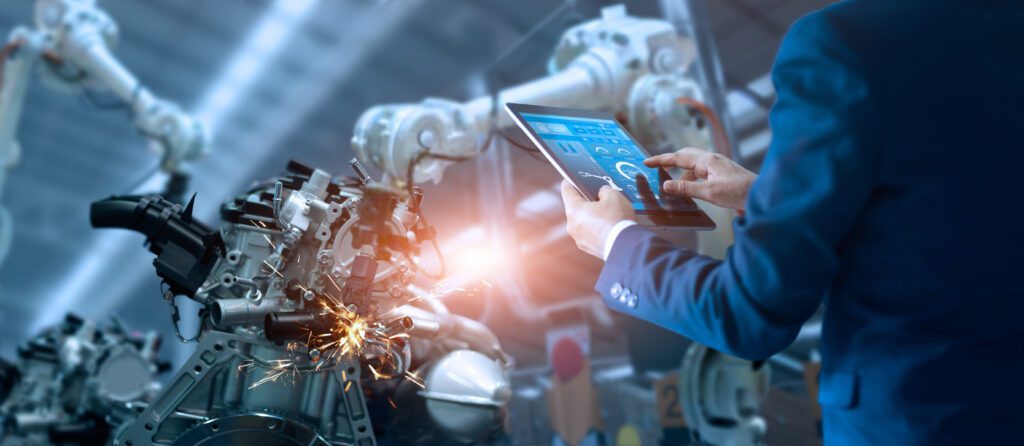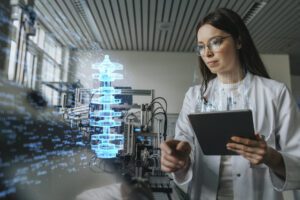What will smart process automation and safety technologies and the distributed control systems (DCS) of tomorrow be like?
Without a crystal ball, it’s impossible to say for sure. But, between the pandemic and ensuing supply chain issues, rising input prices, and the push for greater sustainability, many industries are rethinking the way they approach manufacturing operations.
Organizations need to be able to rapidly recalibrate their operations and output levels to stay competitive. Because of these and other factors, automation solutions of tomorrow will need to be significantly more flexible than they typically are today.

Closed systems inhibit digital transformation; open architectures facilitate it
As the intelligence behind comprehensive process automation, a DCS should help production processes run more efficiently, productively, and safely while providing businesses tools to be agile and adaptable.
From the hardware and software to the ongoing system-specific engineering, training, and maintenance, implementing and maintaining a system is a substantial investment for manufacturers. Over time, however, closed automation architectures become a barrier to innovation and value creation by severely constraining end-user flexibility. Proprietary automation and control environments do this by:
- Locking companies into working with a single vendor, often making the cost, effort, and risk to implement new technologies very high
- Forcing personnel to react to the features and limitations of a closed DCS instead of leveraging opportunities to increase process efficiency
- Driving up the total cost of ownership with hidden costs such as custom software engineering, OEM parts, reduced functionality, and limited connectivity due to its lack of interoperability
- Adapting to new market dynamics and business challenges — particularly carbon reduction, energy transition, and other sustainability goals — often out of reach of legacy technology
Digital transformation in the industrial space can transform manufacturing through advances such as industrial internet of things (IIoT) technologies, smart devices, adaptive robotics, and artificial intelligence (AI) (amongst others), but only if they can be integrated into a DCS. Making that process easier and less expensive means systems must be open, interoperable, and adaptable.
Democratizing process automation empowers end users
According to OMDIA’s report, Taking Control of Industrial Digital Transformation, over 80% of industries see interoperability and openness in a vendor’s control system as crucial to their success. In addition, the report highlights the need for plants and processes to utilize automation architectures that support continuous technological renewal. This is because open and flexible control systems empower industry professionals to exercise more control of their operations in several vital ways:
- Operators can decide how best to extend the lifecycle of their industrial applications based on their business needs
- Plant professionals can respond to fluctuating demand and optimize production capacity without affecting quality or safety
- Open architectures make application development more accessible to users while also allowing plant personnel to focus on purpose-driven outcomes instead of managing dated technology
- Flexible, open systems make it easier for external partners to collaborate with plant professionals to implement improvements and plug technology gaps
Of course, the flexible, open, and modular control system of tomorrow must do all this while still providing the utmost reliability, security, and safety.
Greater electrification will see automation solutions take on new roles
In today’s landscape, reducing energy intensity and greenhouse gas (GHG) emissions and supporting increased electrification is imperative for manufacturers and processors, and process automation technologies play an essential role. Specific industries, particularly Mining, Minerals, and Metals, and the Energies and Chemicals sectors are well-positioned to shift from high-carbon energy sources to renewables and cleaner sources. Sustainability gains will be further enhanced through the implementation of more electrified equipment. As this development accelerates, large manufacturers will need to consider merging electrical systems and process automation control functions. Traditionally, power management and process automation within facilities have been managed separately, leaving plant personnel without a holistic view of operations and limited tools to understand functional interdependencies and enhance plant efficiency. Unified power and process systems can enable employees to coordinate and supervise the greater range of newly electrified assets, loads, and green energy sources. At the same time, integrating simulation tools such as digital twins can help broaden the capabilities of tomorrow’s automation solutions.
Smart, personalized safety – the true promise of tomorrow’s process automation solutions
One thing we can be sure of is that automation technologies will constantly be evolving, and we are already exploring the possibilities of Industry 5.0. Whereas Industry 4.0 is about machine and system interconnectivity, the next industrial revolution will bring humans back into the heart of the equation, with both people and machines collaborating to leverage their combined strengths in exciting new ways. At Schneider Electric, we believe:
- Industry 5.0 will be built around human-centricity, resiliency, and sustainability
- Digital personalization will enable workers to leverage their skills to boost engagement and personal productivity
- The technology will focus on serving the human, with support from the machine, making them more effective together
- Industry 5.0 technologies such as AI and advanced robotics can help teams optimize human-machine interactions to capitalize on and extend human talents to produce better quality, safety, and risk mitigation outcomes
The automation solutions of tomorrow need to be more flexible and open to achieve their total value. Open, standards-based EcoStruxure™ technology is already helping Schneider Electric customers drive greater agility and flexibility in their operations and supply chain strategies to meet changing market dynamics.



